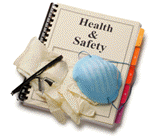When Do I Need to Implement a Safety and Health Program?
Growth is the goal of every business. Business growth that requires adding employees will usually require the development of a Safety and Health Program at some point. Knowing when to develop a Safety and Health Program and what exactly is required can be challenging because a deeper look into the OSHA regulations indicate the expectation is to have a processes in place to protect employee safety and health regardless of the number of employees.
OSHA regulations contain requirements for specific hazard control programs such as Lockout/Tagout and Confined Space Entry, for example. Even if you only have one employee, if that employee is potentially exposed to a cited hazard, the control program must be implemented. Often, employers think they must have 11 or more employees for OSHA regulations to apply. The 10 or fewer exemption applies to routine recordkeeping of on –the-job injuries and the requirement to have a written Emergency Action Plan is also limited to those with at least 11 employees. In the case of Emergency Action Plans however, if an establishment has 10 or fewer employees there is still a requirement to have a Plan, but it need not be written and can be communicated orally.
Worker’s Compensation coverage is required in most states once a business has 4 employees and is often thought of as the “rule of thumb” for when to implement at least the basics of a Safety and Health Program. Worker’s Comp insurance policies often have requirements or incentives for covered companies to have a formal Safety and Health Program in place, but it is not an enforceable regulatory requirement.
The perception that compliance with OSHA regulations require a minimum number of employees is basically a false perception. Anyone meeting the definition of an employer must meet the OSHA requirements for hazard control if only one employee is potentially exposed to a regulated hazard.
